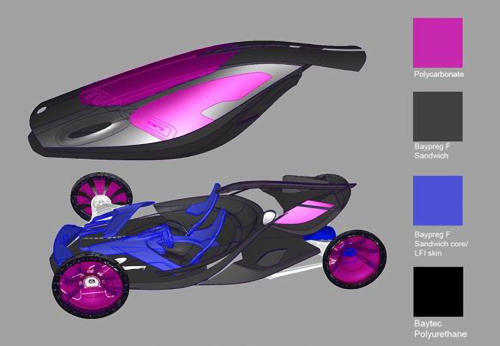
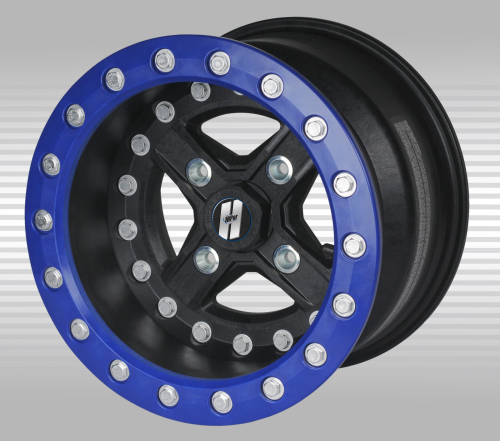
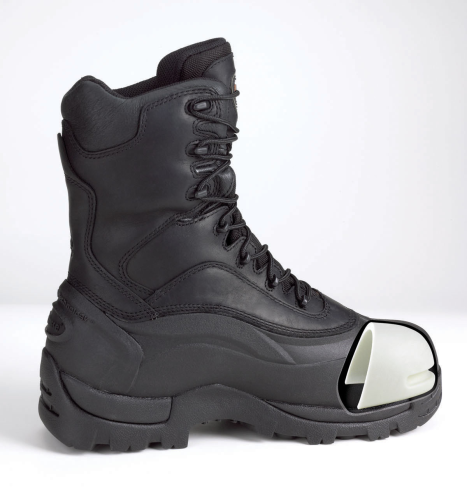
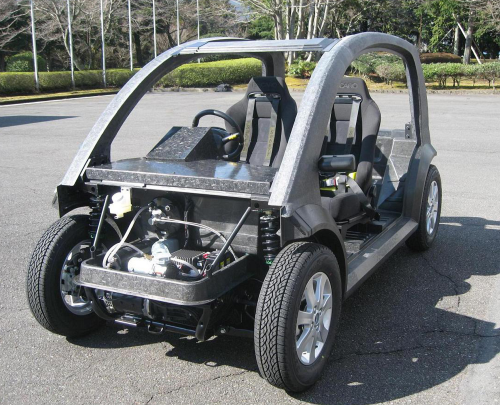
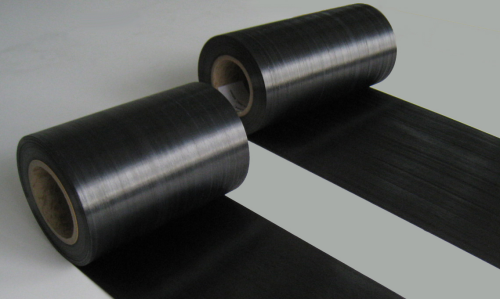
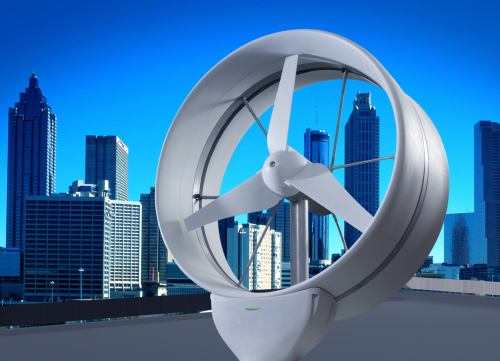
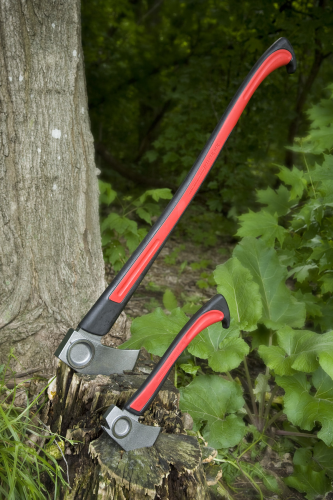
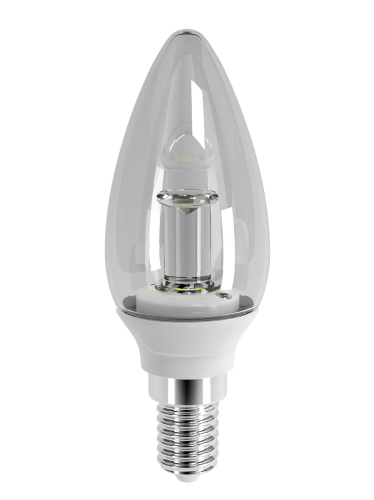
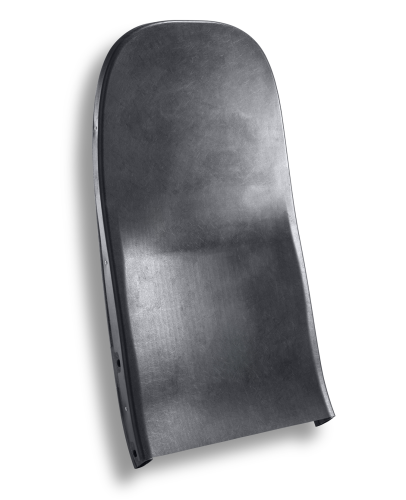
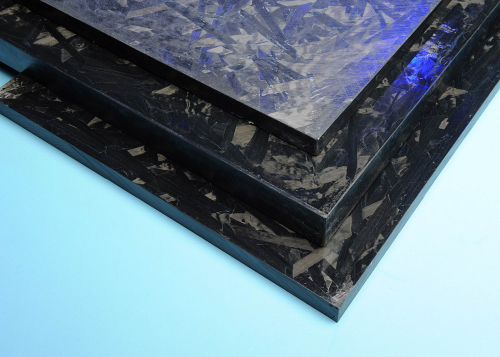
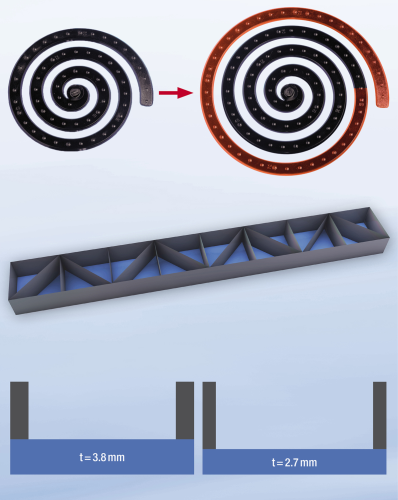
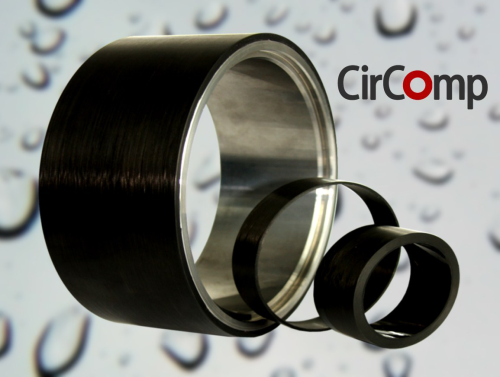
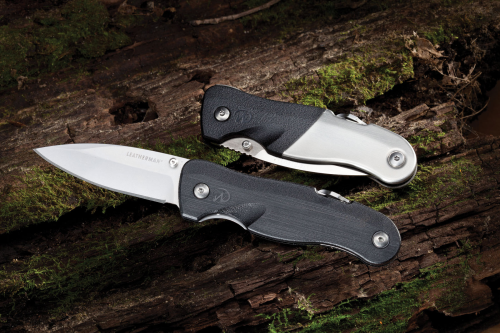
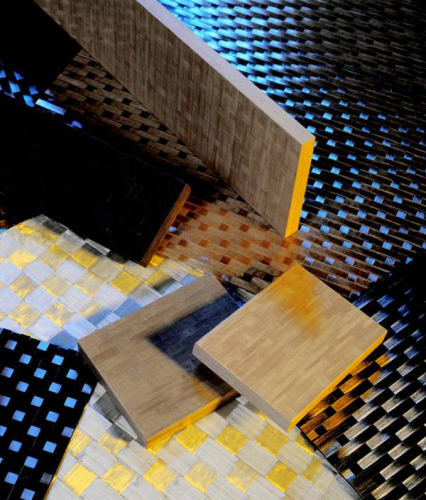
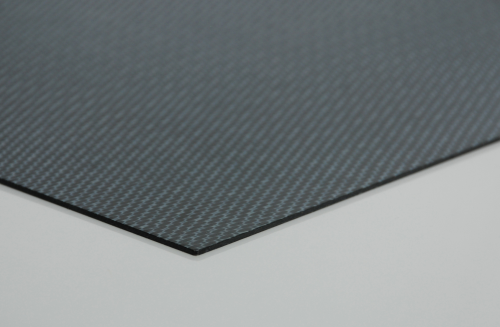
In a market research report, Opportunities in Global Thermoplastic Composites Market, 2009-2014, Lucintel stated that thermoplastic composites are becoming the material of choice for replacing traditional materials such as steel, aluminium and wood, among others. Compared to traditional materials, they have higher strength-to-weight ratios, better chemical and impact resistance and offer greater design flexibility, Lucintel observes.
The future of the thermoplastic composites market is projected to be extremely strong through 2014 and beyond. Use in automotive applications such as air intake manifolds, connectors and engine covers are forecast to grow at more than 50% CAGR (compound annual growth rate) over the period. Producers focusing on innovations and cost leadership will win most of the volume growth, says Lucintel, noting that suppliers of thermoplastic composites are opening plants in high-growth markets in China and India.
A major advantage of thermoplastics over thermosets is the ability to regrind and reuse the material. Recyclability is becoming increasingly important.
“People are demanding green technologies and recycled content in the products they buy,” relates Steve Maki, VP Technology, RTP Company of Winona, Minnesota USA, a global compounder of custom-engineered thermoplastics.
“Another key aspect is shelf life. Unlike thermosets, thermoplastics can be easily stored for long periods of time without loss of performance or ability to process,” he notes.
Cost a key consideration
“My experience has been that you can usually develop a composite to meet even the toughest physical requirements, but if it doesn’t meet the customer’s cost expectations, they will not buy it and your development efforts will be wasted,” Maki observes.
In a paper, Choosing the Correct Thermoplastic Composite, he categorises thermoplastic resins into three basic types:
- low-cost / commodity resins with large volume market costs of less than US$1.5/lb;
- medium-cost / engineering resins that typically fall between $1.5/lb and $3.0/lb; and
- high-cost / high-temperature resins that usually cost above $3.0/lb, some much higher.
According to Maki, there is a direct correlation between the cost and the temperature resistance of the resin. Resins that offer the highest capabilities are the most expensive, he says, listing the top thermal performers as polyetheretherketone (PEEK) and thermoplastic polyimide (TPI), both costing over $30/lb. That’s why users should not over-specify the thermal requirements of an application in order to needlessly avoid driving up the cost of the composite materials. (See box for Maki’s tips on specifying thermoplastic composites.)
RTP Company has developed high-performance long fibre compounds for metal replacement applications. Long fibre compounds produce tough, lightweight injection mouldable compounds, with reinforcement fibres running the entire length of the pellets. RTP is making long fibre compounds with fibres of more than 0.5 inch (12.7 mm) in length, Maki notes.
“We are able to get much better strengths, modulus and impact combinations, also fatigue endurance values than you can with traditional chopped, shorter fibre lengths and aspect ratios,” he says. “With the advent of long fibres, the use of thermoplastic composites has increased dramatically in automotive structures, specifically in front end modules and door modules, which in the past have used metal for structural support.”
He feels auto makers are gaining more and more confidence in these materials.
“They like the energy-absorbing qualities of these composites in crash situations. The material absorbs a lot of energy and provides improved safety,” he adds.
RTP is also spending a lot of time developing long fibre compounds with bio-based polymers, specifically PLA (polylactic acid). Maki discussed these materials at the Bioplastics Compounding and Processing 2011 Conference in Miami, sponsored by AMI Plastics, in March.
R&D for aerospace
A public/private partnership at the University of Twente in the Netherlands has been focused on thermoplastic composites since 2008, when Boeing, TenCate and Stork Fokker entered into a partnership to explore the potential of these materials for aircraft applications. At the university’s Thermoplastic Composite Research Centre (TPRC), researchers are working on process modeling and simulation of automated production processes. They are also examining the performance of new materials, as well as advanced joining methods for thermoplastics.
Remko Akkerman, Scientific Director of the TPRC, calls the partnership a perfect example of a public/private partnership because the members decide together on the directions the research will take. Automated tape placement and complex stamp forming is one area of focus because it holds such great potential for rapid processing. Yet much remains to be learned in order to achieve consistent quality on an industrial scale, Akkerman observes.
“Issues involve getting the right quality – no wrinkles, not tears, no delaminations – in the final product,” he says. “To be able to produce proper components requires a lot of experience with thermoplastics processing, which often is lacking in industry. So we are trying to develop the CAE tools and characterisation methods to simulate the process and demonstrate to industry how it should be done.”
Material screening is ongoing at the TPRC.
“We keep a technology watch on what’s new on the market, looking at material properties and how we can tailor them and possibly improve them,” he continues. “We’re focusing on the ‘high-tech, high-spec’ materials, trying to meet industry’s demand for a material with the performance of PEEK, but at lower cost.”
Development work on joining technologies is another priority. The centre is planning to start up work with hybrid constructions, incorporating metal and composites.
“There’s not one solution for all problems," notes Akkerman. “You will always end up with hybrid constructions. The challenge is to produce them efficiently.”
Recyclability is high on the centre’s list of priorities.
“If institutes like TPRC are successful and composites deployment grows rapidly, then we need to face the issue of what happens after end of life. Should we have a desert full of aircraft and car components, or do we do something with them? I think it’s most relevant to think about either recycling or renewable materials and things like that,” he comments.
Flooring for helicopters
Fiberforge, Glenwood Springs, Colorado, USA, a manufacturing company that has developed a patented production process for continuous fibre reinforced thermoplastic parts, is in the final stages of development of a project to produce a composite floor for the large Sikorsky CH-53K transport helicopter used by the US Marines.
The contract represents about 300 shipsets of panel assemblies, with each shipset incorporating 38 different thermoplastic composite panels that are welded together into an assembly to form the floor, relates Josh Taylor, Director of Business Development. The largest panel is under 1 m2. The composite floor is 25% lighter than the current aluminium floor and is robust in terms of its resistance to chemical spills and other conditions common to military operations, he notes.
Fiberforge is in the process of producing a complete shipset this year and is looking to go into production next year, says Taylor.
“The thermoplastic material is more impact resistant than a traditional thermoset material would be and, in many instances, the manufacturability is much quicker using our process. Also, welding eliminates the need for an adhesive bond,” relates Taylor.
The company plans to produce the helicopter assemblies in its new production plant.
Fiberforge is known for its process that utilises the patented Relay Station tape-laying equipment to produce and consolidate tailored blank preforms that are formed in a hydraulic press. Taylor states that the company has a considerable number of development projects in the works that are confidential until launch. Fiberforge will also license the Relay Station to others to manufacture parts in their own facility, he notes.
Award-winning applications
Thermoplastic composites were well represented in the Owens Corning global Composites App Challenge, conducted recently to find new applications for composites. The $200 000 development award went to a collapsible pallet box produced from a glass reinforced thermoplastic material. Light, strong and recyclable, the box enables up to four times more empty boxes per return trip and can hold 2% more product per load.
Another $200 000 was awarded for a concept to produce intermodal shipping containers with panels of thermoplastic composites that are less expensive to make and weigh 12% less than steel containers. A $10 000 prize was awarded to a student from the University of Sao Carlos, Brazil, for a long glass fibre polyvinyl chloride (PVC) pellet concentrate for increased strength in low-cost products used in construction.
Owens Corning recently introduced two new grades of short glass fibre reinforcements for polypropylene (PP) specifically for automotive applications. They provide a more cost-effective alternative to short glass fibre reinforced polyamide (PA) and long glass fibre reinforced PP in automotive parts, says Owens Corning. The new grades, 248A and PerforMax® 249 short fibres are said to provide an exceptional balance of high-performance mechanical properties, tensile strength and impact resistance to meet increasingly tough automotive application requirements, while reducing overall systems costs.
A carbon fibre reinforced thermoplastic aircraft seat back won a JEC Innovation Award in March. The component was fabricated by Cutting Dynamics of Avon, Ohio USA, in collaboration with TenCate Advanced Composites (TC1100 PPS unitapes), Ticona Engineering Polymers (Fortron PPS resin) and A&P Technology of Cincinnati, Ohio, which used a unique, high-speed moulding process to produce a complex-geometry hollow structure from tape. The tape was braided into a biaxial tubular shape around the edge of the seat back.
TenCate displayed the award-winning component in its booth at JEC 2011 in Paris. Also on display in the booth was a rudder for Boeing’s Phantom Eye long endurance unmanned vehicle that was fabricated with TenCate Cetex PPS RTL laminates and induction welded by KVE Composites Group, the Netherlands. The thermoplastic rudder replaced a thermoset design, achieving weight savings of 25% and cost savings of 5%, reports TenCate. Welding eliminates the cost and weight of fasteners.
The latest product from TenCate is Cetex TC900 Nylon 11, a thermoplastic prepreg system for industrial applications. The Nylon 11 polymer is based on renewable soy bean oil and is said to be resistant to most solvents. TC900 can be processed and formed at moderate 350-400°F (177-204°C) temperatures.
Concept car demonstrators
Baypreg® F polyurethane (PU) composite from Bayer MaterialScience was used in Mazda’s MX-0 concept vehicle to demonstrate that a lightweight vehicle could be mass produced using materials technologies that exist today. Baypreg was used to produce a bonded, two-piece monocoque structure, similar to those used in Formula 1 cars, for the safety cell, subframes, body panels and interior surfaces.
Mazda designers, who patterned the structure after the MX-5 sportscar, determined that the manufacturing of the structure could be automated using composite sandwich materials. The result was a structure weighing only 100 lbs (45 kg), compared with 665 lbs (302 kg) for the production MX-5.
Baypreg F is a two-component PU system used in compression moulding of natural fibre mats alone or fibre reinforced sandwich panels to produce a variety of composite automotive parts.
Carbon fibre producer Teijin recently announced that it had established the world’s first mass production technologies for carbon fibre reinforced plastic, press moulding intermediate materials made with thermoplastic resin in just 1 minute’s time. The company says it has also developed new technologies for welding thermoplastic carbon fibre reinforced plastic (CFRP) parts together and for bonding them with other materials, including steel.
Teijin explains that it has developed three types of materials which can be used selectively, based on the required strength and cost of the part. Various thermoplastic resins can be used, including PP and polyamide (PA). The new intermediate materials are:
- unidirectional intermediate for ultra-high strength in one direction;
- isotropic intermediate for optimum balance of flexibility and multi-directional strength; and
- long fibre thermoplastic pellets for injection moulding of complex parts.
To demonstrate the new materials and technologies, Teijin produced an electric concept car that features a cabin structure made entirely of thermoplastic CFRP. Weighing only 47 kg (104 lbs), or roughly one fifth the weight of a conventional car cabin frame, the four-seat concept embodies Teijin’s vision of super lightweight electric vehicles (EVs) made with CFRP. The company will use the concept car to introduce its technologies to car makers and parts suppliers.
Toho Tenax, the core company of Teijin Group’s carbon fibre business, recently announced the opening of a new production line for Tenax® TPUD unidirectional prepreg at its German production site. The prepreg is reinforced with a specialised carbon fibre with tailored sizing for high temperature thermoplastic applications. A new range of ThermoPlastic Consolidated Laminate materials (Tenax TPCL) has been developed in partnership with French company Porcher Industries. The laminates are formed by consolidating several layers of woven carbon fibre coated fabric with a thermoplastic. Parts are press formed.
More vehicle applications
Sabic Innovative Plastics recently announced its collaboration with IAV GmbH, a global leader in advanced vehicle and powertrain systems, to develop thermoplastic components that can replace metal in electric and hybrid vehicle powertrain systems. The companies say they are targeting new ways to optimise vehicle performance and efficiency, including lightweighting to offset heavy battery packs and shielding in areas of high voltage.
Sabic’s Noryl® polyphenylene oxide (PPO) and Valox® polybutylene terephthalate (PBT) resins can replace steel in battery frames and housing. They offer chemical and temperature resistance, dimensional stability and flame retardancy, notes the company. Ultem® polyetherimide (PEI) also provides high-heat resistance and inherent flame retardancy. For electromagnetic interference/radio frequency interference (EMI/RFI) shielding properties, Sabic offers LNP® Faradex® compounds.
Thermally conductive composites for motors, transformers, solenoids and other coil wound systems are being produced with Sabic’s LNP Konduit® compounds, which are combinations of engineering thermoplastics and special ceramic fillers. The materials, which are said to offer up to seven times the thermal conductivity of typical unfilled thermoplastics, thermosets and epoxies, are the world’s first thermally conductive/electrically insulating compounds, says Sabic. A lighting manufacturer in China has selected Konduit to injection mould heat sinks for LED retrofit bulbs as a replacement for aluminium.
|
Thermoplastic compounds can be tailored to provide multiple property enhancements in a single material. In a paper Choosing the Correct Thermoplastic Composite, Steve Maki, VP Technology, RTP Company, discusses several fundamental considerations to help users avoid pure guesswork in selecting the best thermoplastic matrix for their applications. Over 60 thermoplastic base resins can be used to produce composites, notes Maki. Understanding morphology is the best way to narrow the choices. Morphology classifies thermoplastics as either amorphous or semi-crystalline. Here are some common ones:
This chart from Maki’s paper shows the strengths of each morphology type.
After selecting the resin, the next decision is what to add to impart performance, notes Maki. He discusses aspect ratio of an additive to predict the type of physical property enhancement it will impart when compounded into the base resin. Additives with aspect ratios of less than 10 have little ability to improve tensile and flexural strength, while those with an aspect ratio above 50 – referred to as reinforcements – can significantly improve the tensile and flexural strength of the base resin. Unfilled PA 66, for example, has a tensile strength of 11k psi and flexural strength of 16k psi, while the same resin reinforced with 40% glass fibres has a tensile strength of 32k psi and a flexural strength of 45k psi. Flexural modulus is 400k psi for unfilled versus 1700k psi for filled. Maki states that long fibre composites have become the material of choice for demanding applications, such as replacing metal in load-bearing applications. The high aspect ratio in long fibre composites also enables them to exhibit excellent creep resistance, says Maki. |
Evonik Industries, Germany, recently introduced a new 30% glass fibre reinforced polyphthalamide (PPA) compound that contains an internal lubricant. Vestamid® HT Plus M1533, developed specifically for gearbox applications, can be used to produce gear wheels, friction bearings and ball bearing cages, among other applications requiring reduced friction and minimum abrasion. Evonik has also added 45% glass Vestamid HT Plus M1533 in response to demand for a high-performance PPA. It is said to be well suited for injection moulded applications that must withstand extremely high temperatures.
Withstands the elements
A glass fibre reinforced material from BASF’s Luran® S family of acrylonitrile styrene acrylate (ASA) polymers is being used to produce a small wind turbine to generate electricity on industrial facilities, high-rise buildings, municipal buildings, as well as private homes. The Dutch company EverkinetIQ International has installed the first prototypes of its micro wind turbine on buildings in the Netherlands, where they are undergoing extensive field trials. Luran S KR 2858 G3 was selected because it offers extremely good resistance to weathering, UV radiation, aging and chemicals, says BASF.
BASF has expanded the capabilities of its Ultrasim™ universal simulation tool to optimise the improved-flow benefits of its new Ultramid® B High Speed grades of PA 6 to achieve weight savings of up to 25%. In addition, two new grades have been added to the easy-flow family: Ultramid B3WG6 High Speed grade with 40% glass fibre content; and Ultramid B3GK24 High Speed grade, which is reinforced with glass fibres and glass spheres to provide extremely low warpage. Ultramid B High Speed is said to flow at least 50% farther than standard PA 6, enabling reduced thinner wall thicknesses and lower weight.
Novel composite trailer
A liquid thermoplastic composite technology using Cyclics Corporation’s range of thermoplastic polyesters has been developed that is capable of producing large structural components, including the bed of a 13.5 m (44.3 ft) semi-articulated trailer. CBT® resin, the cyclic form of polybutylene terephthalate (PBT) is being used because of its very low viscosity during polymerisation and negligible volatile organic compounds (VOCs) during processing. Liquid thermoplastics provide toughness, durability, impact resistance and recyclability in low-cost polymers.
CBT resin is produced from standard PBT resin from BASF, which is partially depolymerised at elevated temperatures. The process converts PBT into a lower molecular weight CBT resin. A reversible reaction enables CBT to repolymerise to PBT, an engineering thermoplastic with excellent stiffness and chemical resistance, Cyclics explains.
Processing methods include resin transfer moulding (RTM), vacuum infusion and low-pressure bag moulding. The low-pressure moulding techniques for the trailer bed were developed by EPL Composite Solutions in the UK using prepreg materials from Ahlstrom Glass Fibre, Finland. The trailer was produced with three mouldings, the largest weighing over 1000 kg (2205 lbs). Lifecycle testing is continuing in the UK.
Lanxess, at the recent VDI Plastics in Automotive Engineering Conference in Mannheim, had an exhibit focusing on a new polyamide (PA) composites sheet that can be formed in an injection mould in a one-shot process. The company says it has succeeded in linking the simulation of the forming process with mechanical structural analysis, precisely describing the non-linear anisotropic material behaviour of the composite sheet. Reinforced with continuous fibres, the sheet is designed for automotive metal replacement applications.
In its booth, Lanxess also highlighted lightweight structural applications of its Pocan® PBT and Durethan® engineering thermoplastics based on PA 6 and 66 for electric and hybrid vehicles. Pocan offers high heat resistance, strength and hardness, low susceptibility to stress cracking as well as excellent slip properties and high abrasion and chemical resistance. The Durethan range combines high mechanical strength and stiffness with good electrical insulation properties, high resistance to heat and chemicals, low friction, wear resistance and attenuation of noise and vibration.
A new grade of Durethan has been developed specifically for physical and chemical foaming, enabling the production of injection moulded parts that are up to 20% lighter than solid moulded parts. Two new polyamide grades are reinforced with 35% glass fibres and are optimised for foam formation, producing very homogeneous single-phase solutions when combined with the plastic melt in the plasticating unit, the company relates. Automotive cylinder head covers and fan shrouds are among the target applications.
Innovations in PEEK
An innovative process that weaves fully impregnated unidirectional tapes made with Victrex PEEK polymer into composite fabrics has been developed by Germany-based Tissa Glasweberei AG, a leader in fibreglass weaving. The process eliminates the need for post impregnation during later press forming. The new fabrics use PEEK in the form of powder or granules as the matrix material to manufacture advanced thermoplastic composite prepregs reinforced with carbon, glass or aramid continuous fibres.
Fibre content up to 65% is available, providing excellent mechanical properties. The fabrics are tailored for use in aerospace, industrial and medical applications but are not suitable for complex parts. Victrex PEEK polymer powders and pellets have been used as a matrix material in the manufacture of advanced thermoplastic composite prepregs since the 1990s, the company relates. Other products include Victrex HT polymer for increased service temperatures and Victrex PEEK 90 for reduced viscosity.
Victrex and Ensinger GmbH have stepped up their cooperation for the manufacture and sale of PEEK-based products. Ensinger, a designer and manufacturer of semi-finished profiles and technical parts, will continue to use PEEK exclusively for the manufacture of Tecapeek stock shapes. The two companies are working together to open up new applications for the high-performance materials. Stock shapes in the chemical-resistant and radiolucent Tecatec series feature a thermoplastic matrix and woven carbon fibre fabric.
Swiss prepreg manufacturer Suprem SA is reporting annual growth of more than 50% in its business from products made with Victrex PEEK polymer. Suprem has developed a proprietary impregnaton method that enables rapid production of prepreg tapes optimised for automated processing equipment. The excellent thermal stability and consistency of Victrex PEEK enables the company to work with tight process controls in the impregnation process of the unidirectional (UD) tapes.
CirComp GmbH, a manufacturer of composite components, has developed a new generation of carbon fibre Victrex PEEK polymer-based composite friction bearings, which are optimised for resistance against shock and wear for long service life and increased reliability. The polymer was selected to replace thermoset polymers as the matrix material in the design of the new bearings. PEEK offers high temperature performance and a unique combination of properties, relates Victrex. ♦
This article was first published in the May/June 2011 issue of Reinforced Plastics magazine.






